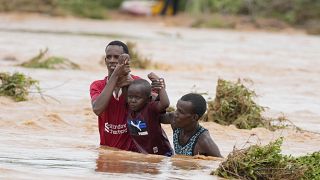Children
The number of children who died before their fifth birthday has reached a historic low, dropping to 4.9 million in 2022, according to the latest estimates released today by the United Nations Inter-Agency Group for Child Mortality Estimation (UN IGME).
The report reveals that more children are surviving today than ever before, with the global under-5 mortality rate declining by 51 per cent since 2000. Several low- and lower-middle-income countries have outpaced this decline, showing that progress is possible when resources are sufficiently allocated to primary health care, including child health and well-being. For example, the findings show that Cambodia, Malawi, Mongolia, and Rwanda have reduced under-5 mortality by over 75 percent since 2000.
But the findings also show that despite this progress, there is still a long road ahead to end all preventable child and youth deaths. In addition to the 4.9 million lives lost before the age of 5 – nearly half of which were newborns – the lives of another 2.1 million children and youth aged 5-24 were also cut short. Most of these deaths were concentrated in sub-Saharan Africa and Southern Asia.
This tragic loss of life is primarily due to preventable or treatable causes, such as preterm birth, complications around the time of birth, pneumonia, diarrhoea, and malaria. Many lives could have been saved with better access to high-quality primary health care, including essential, low-cost interventions, such as vaccinations, availability of skilled health personnel at birth, vaccinations, support for early and continued breastfeeding, and diagnosis and treatment of childhood illnesses.
Improving access to quality health services and saving children’s lives from preventable deaths requires investment in education, jobs, and decent working conditions for health workers to deliver primary health care, including community health workers.
Studies show that child deaths in the highest-risk countries could drop substantially if community-based child survival interventions could reach those in need. This package of interventions alone would save millions of children and would deliver care closer to home. Integrated management of childhood illnesses – especially the leading causes of post-neonatal death, acute respiratory infections, diarrhoea, and malaria – is needed to improve child health and survival.
The report also notes large gaps in data, particularly in sub-Saharan Africa and Southern Asia, where the mortality burden is high. Data and statistical systems must be improved to better track and monitor child survival and health, including indicators on mortality and health via household surveys, birth, and death registration through Health Management Information Systems (HMIS), and Civil Registration and Vital Statistics (CRVS).












Go to video
British police charge two men after Channel migrant deaths
01:15
Africa: About 51 million lives saved through immunization programme - WHO
01:42
Gaza doctors deliver baby girl from mother killed in Israeli airstrike
Go to video
South Africa ; Gauteng Health raises concerns about rising food poisoning incidents
01:12
Rising Palestinian casualties in Gaza
02:20
Senegal: In some classrooms, deaf and hard-of-hearing pupils now study alongside everyone else